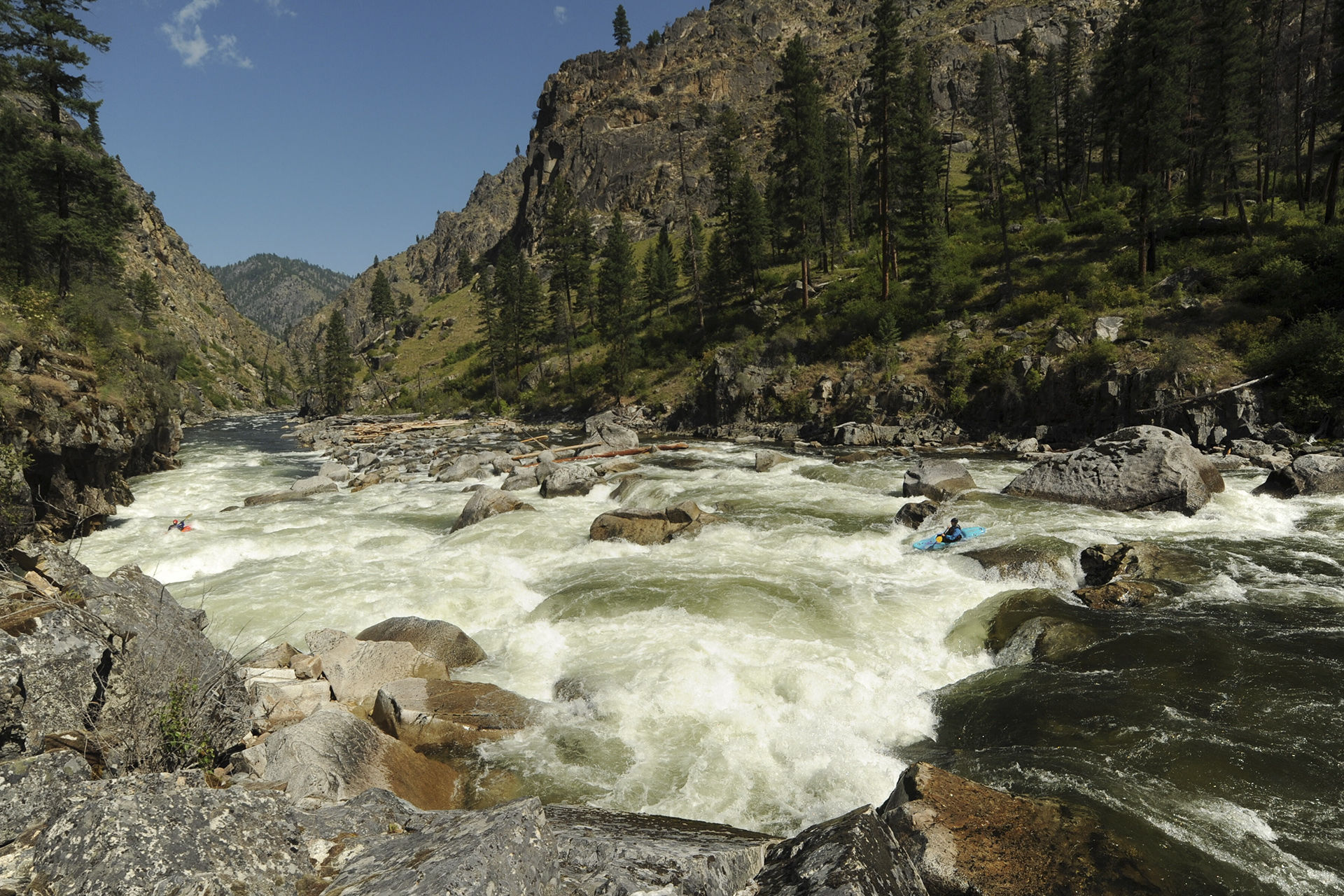
EPA Notes Significant Concerns with South Fork Salmon Mine Project
The Environmental Protection Agency (EPA) in a letter to the U.S. Forest Service (USFS) detailed numerous concerns, including the potential for degradation in water quality and the "disproportionately high and adverse impacts to tribal populations,” in response to the proposed Stibnite Gold Project in the South Fork Salmon watershed (ID). A large-scale gold-antimony mine in the headwaters of this major tributary to the Wild and Scenic Salmon River could significantly harm the protected water quality of these Native American tribal fishing grounds and the classic whitewater paddling in the drainage according to the EPA. "Based on our review of the draft EIS, we continue to have significant concerns regarding potential impacts to water quality and aquatic resources," the EPA expressly noted in their 29 page comment on the Forest Service’s draft Environmental Impact Statement (DEIS) for Midas Gold’s proposed mine operations.
For whitewater paddlers, the South Fork and Main Salmon Rivers provide a world class recreation experience. This EPA comment letter indicates that without significant changes to project plans, mine operations have the potential to damage that experience in a number of unacceptable ways. Over 3,000 individual paddlers agreed and sent letters to the Forest Service last fall expressing their opposition to the project using American Whitewater’s easy-action public input tool. The drainage has recently recovered from past mining activity and millions of dollars has been spent on the restoration of the watershed’s water quality and threatened fish populations. It is just too exceptional of a place, not to mention whitewater resource, for the negative impacts associated with this scale of massive mining activity.
On Friday January, 15, Midas Gold reached a settlement agreement with the EPA to begin environmental restoration at the abandoned mine site within the boundaries of their current proposed project. The agreement allows the Company to voluntarily address environmental conditions at the abandoned mine site without inheriting the liability of the conditions left behind by past operators. The Nez Perce Tribe expressed their disappointment with the settlement. Shannon F. Wheeler, Chairman of the Nez Perce Tribal Executive Committee stated the agreement was, “stunningly inadequate and fails to accomplish the comprehensive and responsible cleanup of the Site that the Nez Perce Tribe and Idahoans deserve.”
“Most of the cleanup actions are contingent on the approval of the company's mining Project, are entirely optional, and are based on protracted timelines that unreasonably delay cleanup. The only mandatory actions required by the settlement agreement do not provide anywhere near the robust, comprehensive, and Site-wide cleanup needed and which Midas Gold, in numerous public statements, has promised,” continued Wheeler.
Beyond impacts to paddlers, as the EPA also specifically points out, the EIS does not adequately address the need for specific mitigation measures detailing how impacts to tribes will be resolved. Native American access and uses of the watershed — including hunting, fishing, ceremonial and "spiritual, medicinal, and intrinsic values" — have "long-standing and on-going subsistence and cultural importance for Tribal members," according to the DEIS. Local tribes, such as the Nez Perce, Shoshone-Bannock and Shoshone-Paiute tribes, have historically used the South Fork Salmon River area for traditional and spiritual purposes, uses which are now protected. Mitigation measures for tribal impacts would normally be addressed in a DEIS under “environmental justice," part of an executive Forest Service mandate to consider undue harm to minority and low-income populations.
The project, through an administrative rule change that adds mining to a list of industries under FAST-41, a law intended to streamline permitting for utility projects, is receiving fast-tracked permitting and moving quickly towards a final decision. It is our hope that the EPA’s and our shared concerns will be addressed by the incoming administration. Our hope is also that tribal consultation will play a larger role in the federal government's environmental reviews in general, especially with the hiring of Rep. Deb Haaland, D-N.M., to be the first Native American woman to lead the Interior Department. Environmental justice issues and our common goal of preserving the water quality in this one-of-a-kind drainage must be addressed. We will push the new administration to slow the approval process for this mine and we will continue to advocate for the Forest Service to reject this proposal and protect the outstanding water quality of this vitally important river system for native and endangered fish, outdoor recreation, local tribes, and the economies of the communities that surround it.
Evan Stafford
Fort Collins, CO 80524
